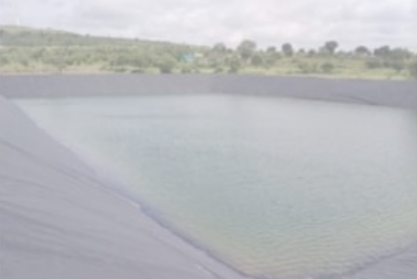In the field of aquaculture and fishing industries, the basis of a successful fish farming venture is based on effective pond administration. A essential element in this equation is the High-Density Polyethylene fish pond liner, a dependable and environmentally friendly option for establishing and maintaining fish ponds.
Comprehending HDPE Fish Pond Liners
HDPE fish pond liners are engineered from HDPE, a artificial thermoplastic polymer recognized for its outstanding durability, toughness, and resistance to environmental factors. These liners are specially made to create a leak-proof barrier within fish ponds, guaranteeing water conservation and preventing spillage or seepage.

Key Characteristics of HDPE Fish Pond Liners
Longevity: HDPE fish pond liners are known for their robustness and endurance against severe environmental conditions, including UV radiation, severe temperatures, and the ordinary degradation associated with fish farming.
Versatility: These sheets are highly flexible and can conform to the form and outlines of the pond, ensuring a tight and snug fit.
Chemical Resilience: HDPE liners are resistant to various chemicals, including those used in aquaculture for water treatment and pathogen management, maintaining the integrity of the liner.
Minimal Upkeep: HDPE fish pond liners demand minimal maintenance, contributing to cost-effectiveness and ease of pond management.
Applications of HDPE Fish Pond Liners
HDPE fish pond liners act as the foundation for a wide range of aquaculture uses. Here are some common applications:
Fish Farming: HDPE liners are crucial for establishing and lining fish ponds, ensuring water retention and stopping soil contamination.
Prawn Cultivation: These liners are also used in shrimp farming to form and sustain ponds for shrimp cultivation.
Hatcheries: In fish and shrimp hatcheries, HDPE liners are utilized in containers and channels for rearing and breeding activities.
Aquaculture Research: Plastic pond liners are used in aquatic farming research centers where controlled environments are necessary for scientific studies.
Advantages of Utilizing High-Density Polyethylene Pond Liners
Moisture Control: HDPE liners create a reliable barrier that prevents water seepage, keeping constant water levels within fish tanks. This is crucial for the health and growth of aquatic species.
Longevity: These liners are made for durability, withstanding the rigors of fish farming activities and ecological influences over an extended lifespan.
Biosecurity: High-Density Polyethylene liners assist in preserving a clean and controlled environment within fish tanks, reducing the risk of disease transmission and contamination.
Environmental Responsibility: HDPE is an eco-friendly material that does not leach harmful chemicals into the water, ensuring it is safe for marine life and the surrounding ecosystem.
In Conclusion
HDPE fish pond liners serve a crucial function for successful aquaculture and fishery operations by delivering a robust, versatile, and green solution for pond management.
More information about bat lot ho tom see this website
